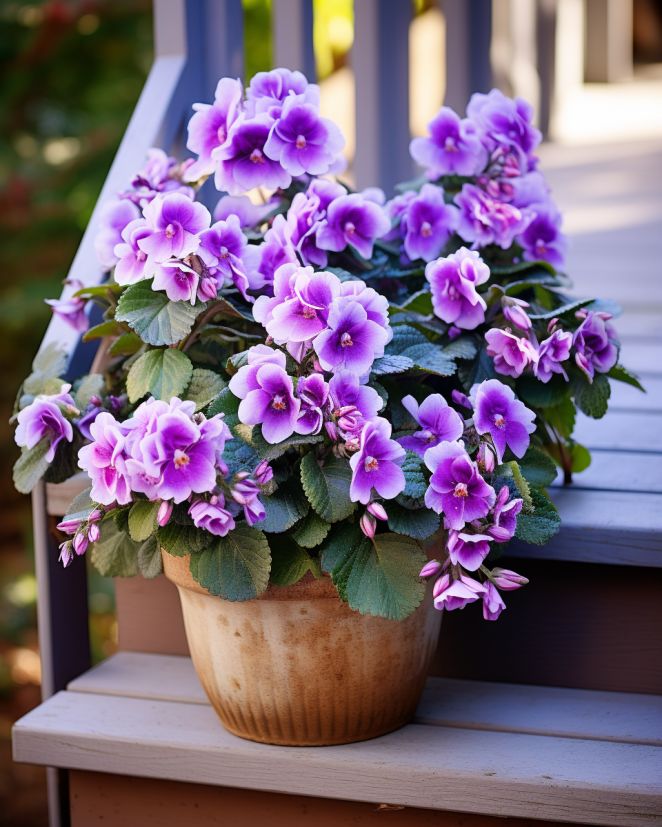African violets should be watered as soon as the top of the soil feels dry to the touch. Use only room temperature or slightly warmer water when watering your plants, taking care to keep water off of the leaves. Water that is cooler than the leaves will cause leaf spotting. They like fairly humid conditions; if you live in a dry climate, group plants together to create a micro-environment that stays a little moister, or place pots on a tray of pebbles that is kept watered.
4. Fertilize often
To keep your African violet blooming, it’s important to keep it well fed. A low-nitrogen, high-phosphorus fertilizer blend encourages bloom production while limiting vegetative growth. Many violet-specific products are available on the market, but it isn’t necessary to purchase one if you can’t find one locally. A well-balanced, high-quality fertilizer works just as well. It is recommended to fertilize plants lightly every time they are watered to provide continuous food.
5. Remove old blooms
African violets bloom constantly throughout the year if cared for properly. One of the most important tips is to pinch off or remove spent blossoms. This encourages the plant to produce new buds instead of trying to send its resources to the dead tissue.
6. Re-pot plants periodically
Over time, the nutrients in the potting soil become depleted as the roots absorb them for use by the plant. Refresh the potting mix by re-potting your African violets once or twice a year. More often than not, the pot size doesn’t need to change and won’t exceed 4 to 5 inches in diameter.
